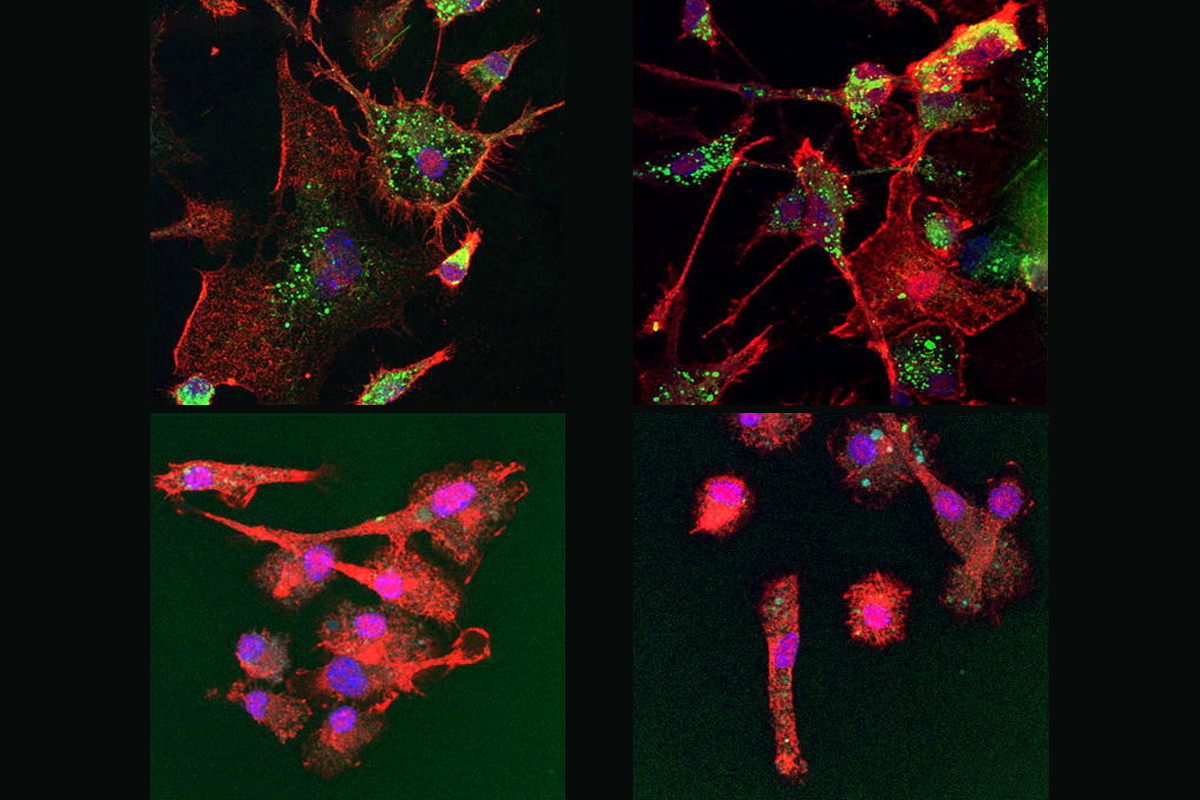- Oxytocin exposure during birth alters oxytocin signaling and communication in rat pups; in males, it also alters functional connectivity and empathy-like behaviors. iScience
- Alpha activity in the brains of 1-year-old children later diagnosed with autism is related to restricted and repetitive behaviors at 2 years old, according to a preprint. Research Square
- Mice missing the interleukin-1 receptor show autism-like behaviors and an unusually high number of synapses, suggesting the cytokine mediates microglial pruning of neuronal connections during development. Brain, Behavior, and Immunity
Oxytocin during labor; infant brain activity; interleukin-1
Here is a roundup of autism-related news and research spotted around the web for the week of 12 February.
By
Jill Adams
13 February 2024 | 1 min read

Pruning maneuvers: Microglia missing the interleukin-1 receptor gene (bottom panels) show deficits in engulfing synaptosomes (green) compared with wildtype cells (top panels).
- The link between pragmatic language difficulties and repetitive behaviors observed in autistic children also occurs in non-autistic children. Autism Research
- A machine-learning strategy can distinguish patterns of neural activity for autistic versus non-autistic adults who are engaging in eye contact with another person. Scientific Reports
- Preterm infants display altered functional connectivity that is associated with social and sensory difficulties and repetitive behaviors in an autism screen at 18 months of age. Nature Communications
tags:
Explore more from The Transmitter

RNA drug corrects calcium signaling in chimeric model of Timothy syndrome
By
Katie Moisse
24 April 2024 | 5 min read
Cite this article:

